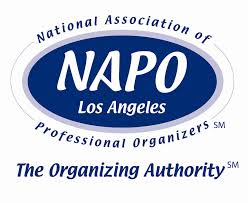The Mass-Media Madhouse
(Press-Central For Handy Soundbites, Useful Info,
And A Good Wet-Your-Pants Laugh)
Home / The Mass-Media Madhouse
(Press-Central For Handy Soundbites, Useful Info,
And A Good Wet-Your-Pants Laugh) / Smead Organomics / As Published In Smead Organomics --
Successful Time Management
As Published In Smead Organomics —
Successful Time Management

Talk to any Professional Organizer, and s/he will tell you that the best time management techniques make room for “want to” items as well as “have to” tasks. The problem is that many of us are in a state of extreme overwhelm, just trying to stay on top of everyday responsibilities — we don’t have energy left over for those higher priorities in life. Fortunately, it’s easy to regain control over the daily grind with a few good time management techniques. Let’s start by examining the way you deal with routine to-dos.
Manage The Incoming Flood
When you receive a piece of paper that requires some action on your part, what do you do? Put it in a stack on your desk of miscellaneous to-dos — where it will sit, lonely and neglected for weeks or months, until you receive another reminder about that to-do that you forgot? It doesn’t have to be that way — not if you have an actual system in place for proactively dealing with new documents, from the moment they first enter your life. Take a second to get organized, and those “to-dos” will get done on time.
Decide Where To Put Things
Start by sorting to-do’s according to the action required to clear that item up. Each day, take five minutes to go through the day’s incoming mail, work documents, and school papers. Ask what you need to do with each — then store in the appropriate “action file,” based on your answer. Your action files should sit out in a file box or rack — placed in plain view, wherever you go through your mail. Include categories like:
|
|
|
Now each document has a set place to live until you tackle it, and you can easily see exactly which to-dos are on your plate. You can also put handwritten notes into your folders (a list of people to call in the “to contact” file or a reminder about a particular action item on your computer) if a to-do doesn’t come with a corresponding piece of paper. Conversely, you can also keep an electronic to-do list that outlines the items in your files, as well as other non-tangible tasks. (Whatever it takes for you to stay on top of it all.)
Get It All Done
So how do you make sure these action items actually get acted on? Don’t wait until you have time — you must make time. Schedule a regular weekly appointment with yourself — during this admin time, you’ll go through each file and try to complete every item inside. If you can’t finish a task for some reason, put it back in the folder to tackle during your next admin period. And if you complete one step (paying a bill), but then realize that you have another action to take with that paper (calling to correct a billing error) — move it to the appropriate file for that next step.
Deal With Deadlines
You will, occasionally, run into to-dos that have strict deadlines — bills to pay, registering for a conference, sending in a permission slip for your kid’s field trip, disputing a charge on your credit card. As you sort through incoming paperwork, note any item that has a specific due date (especially if it will arrive before your next admin day) and record it in your calendar — along with a reminder about where that document is stored. Incorporate these tasks into your routine for that day — treat them as a priority and get them done first thing in the morning, before you get busy or distracted.
Click here for reuse options!Copyright 2001 RamonaCreel.com
 PS: Wanna instantly rack up some serious virtual cred? I've made it easy for you to share this content with your social networking friends, e-mail it to your peeps, or republish it in your own blog (thereby showing off how smart you are) with these links.
PS: Wanna instantly rack up some serious virtual cred? I've made it easy for you to share this content with your social networking friends, e-mail it to your peeps, or republish it in your own blog (thereby showing off how smart you are) with these links.
(iCopyright widget here)
"I Have More To Say About This... No Surprise!"
If you would like to reprint this page, please contact me





